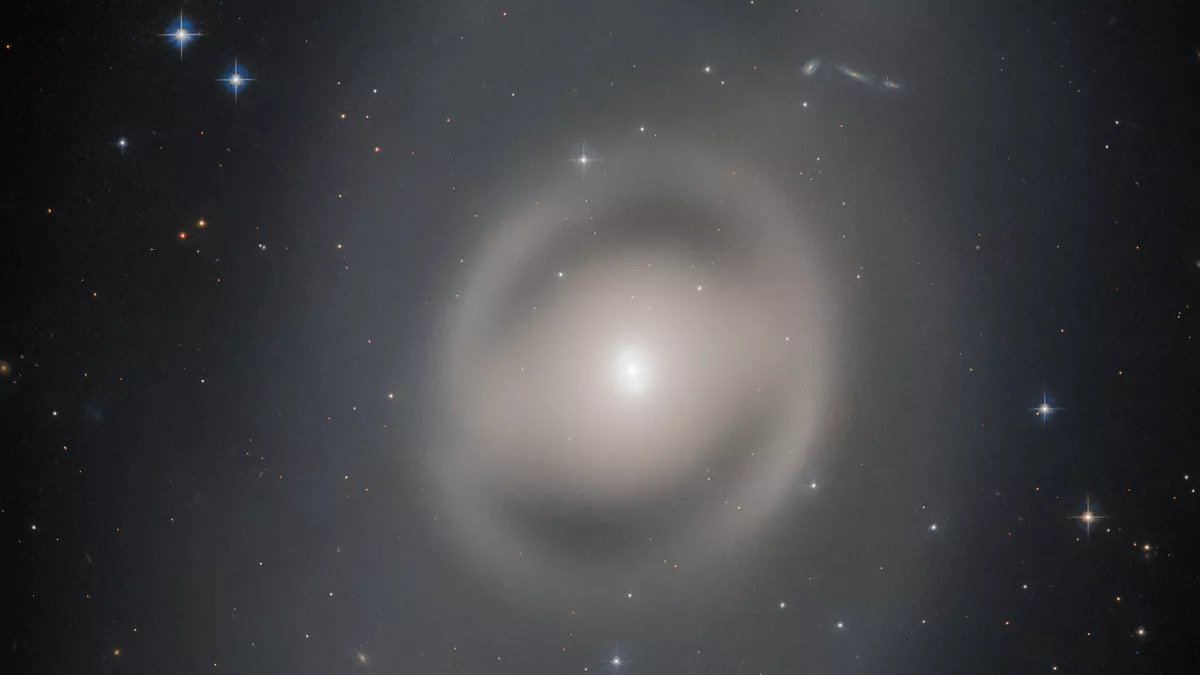Hubble, the famous space telescope designed by NASA and ESA, has just unveiled an amazing image. This is a photo of a so-called “lenticular” galaxy, which is 44 million light-years from Earth. Its general appearance, like a whitish aura, is truly intriguing.
This galaxy, called NGC 6684, is located in the heart of the constellation Peacock (constellation in the very dim southern hemisphere) and has a very particular appearance. Very pale, it has no truly distinctive “arms” like spiral galaxies do, and it is stretched out in the shape of a lens, giving it an almost ghostly appearance.
A galaxy halfway between the spiral galaxy and the elliptical
Among the many forms of galaxies that exist are these two structures: spiral galaxies and elliptical galaxies. The former are formed around a flat disc and a central core from which spiral arms extend. This is the case of our galaxy, the Milky Way, but not only. The planet Earth is also located in one of these arms, called “Orion’s arm.” “. The second type of galaxy, elliptical in shape, has a more uniform and smooth appearance, and does not have spiral arms. The stars inside are distributed rather randomly. A well-known example of an elliptical galaxy is Messier 87, located at a distance of 54 million light-years from Earth.
NGC 6684 is a galaxy characterized as lenticular, since it has a large disk (which is not always the case with elliptical galaxies), but does not have visible arms. It is in a way a hybrid galaxy between the lenticular and elliptical form. It is this combination of factors that gives it this particular visual aspect, very diffuse and spectral.
A new vision of the neighboring universe
The image was captured by the Hubble Telescope as part of a large stellar census titled ” Every Known Nearby Galaxy “. This project aims to observe and capture all the galaxies located within a radius of 32.6 million light-years that Hubble had not been able to visit before. But even before the existence of this inventory program, Hubble had already done a good job, since it had identified 75% of the galaxies concerned.
Thanks to this census, it will be possible to understand more precisely the stars and their distribution in different types of galaxies. The snapshot of NGC 6684 captured by Hubble is truly captivating, as its appearance is unique to admire. This simple glimpse is enough to fascinate and make you dizzy. A bit like the shots we regularly enjoy with the James Webb telescope.
Sources: NASA, Space

5